Reviewing Social Media Discussions on Seasonal Flu: When Public concern over Illness sparks an Information Wave
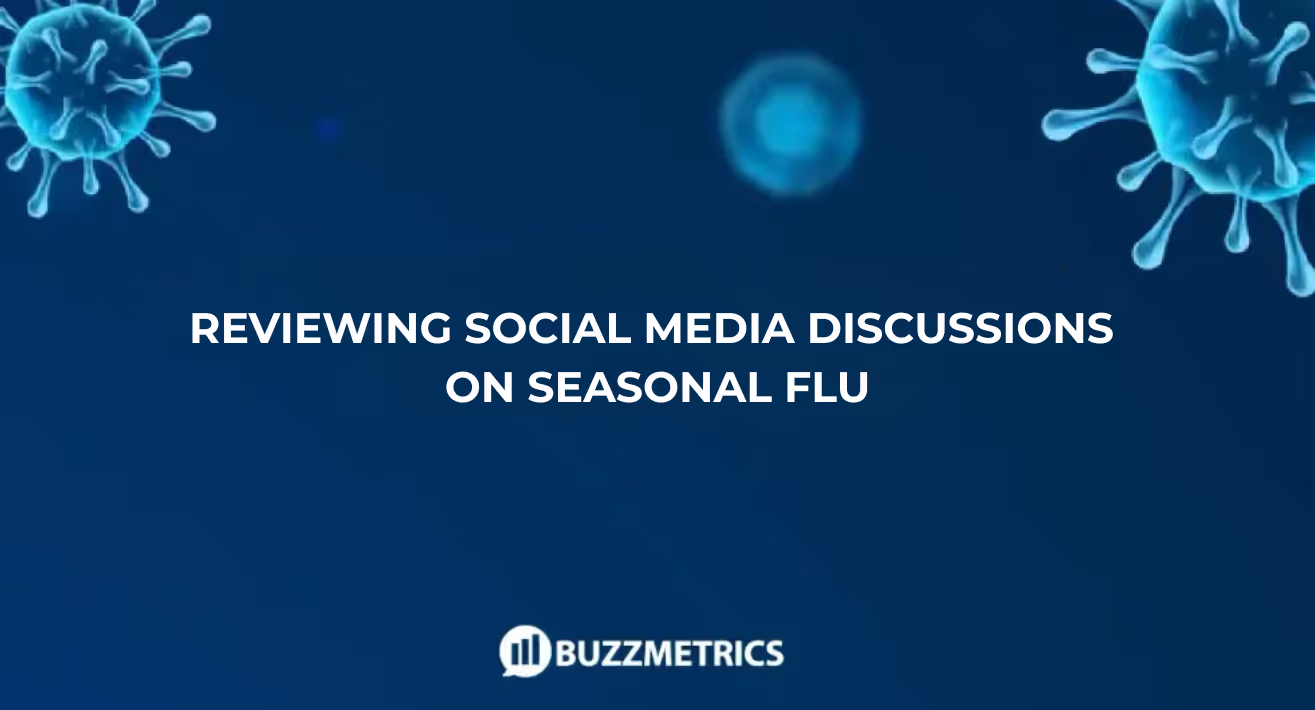
In the context of increasingly unpredictable developments in infectious diseases, seasonal flu - once thought to be all too familiar - has once again become a focal point on social media. Driven by the effects of global information flow and the rapid spread of content on digital platforms, discussions around seasonal flu not only reflect user concerns but also reveal how communities approach, handle and respond to public health issues.
1. Seasonal flu discussions on social media
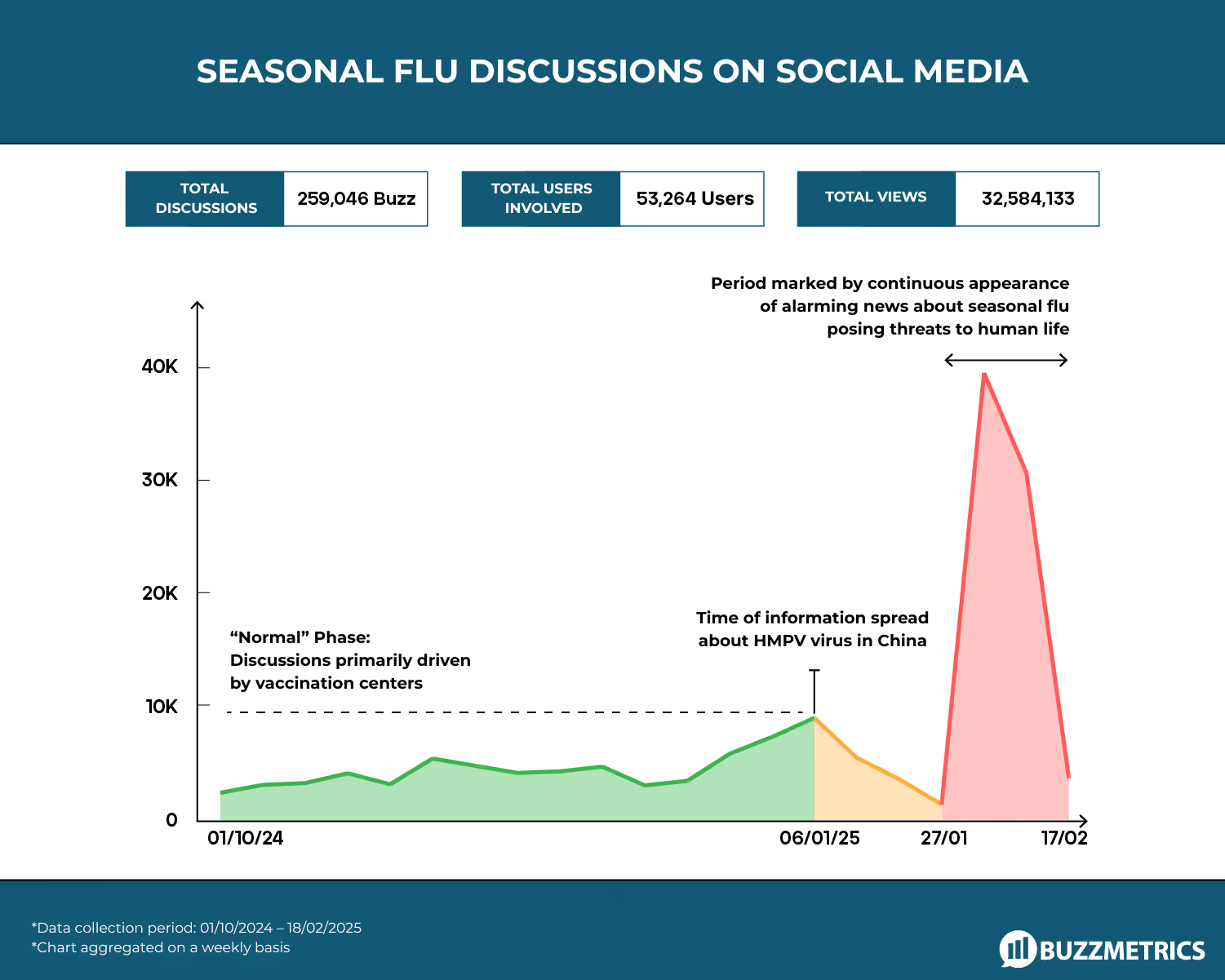
Data from the past 5 months indicates two notable surges in online discussions surrounding seasonal influenza:
- The first phase observed a moderate increase in conversation volume, primarily driven by public concern over a reported outbreak in China attributed to the HMPV virus. In the absence of clear information regarding the severity and nature of the disease, users expressed confusion and anxiety. However, thanks to the timely dissemination of verified information from health authorities and medical experts, public discourse quickly stabilized.
- The second phase, which began in early February, marked a more substantial and sustained wave of discussion, lasting at least until February 19. Multiple converging factors simultaneously captured the attention of the online community:
+ The passing of actress Barbie Hsu, reportedly linked to complications from seasonal influenza.
+ Japan reported 9.5 million flu cases.
+ The United States recorded 13,000 flu-related deaths, prompting widespread temporary school closures.
+ Several severe flu cases were also reported domestically.
2. Shifts in Discussion Platforms
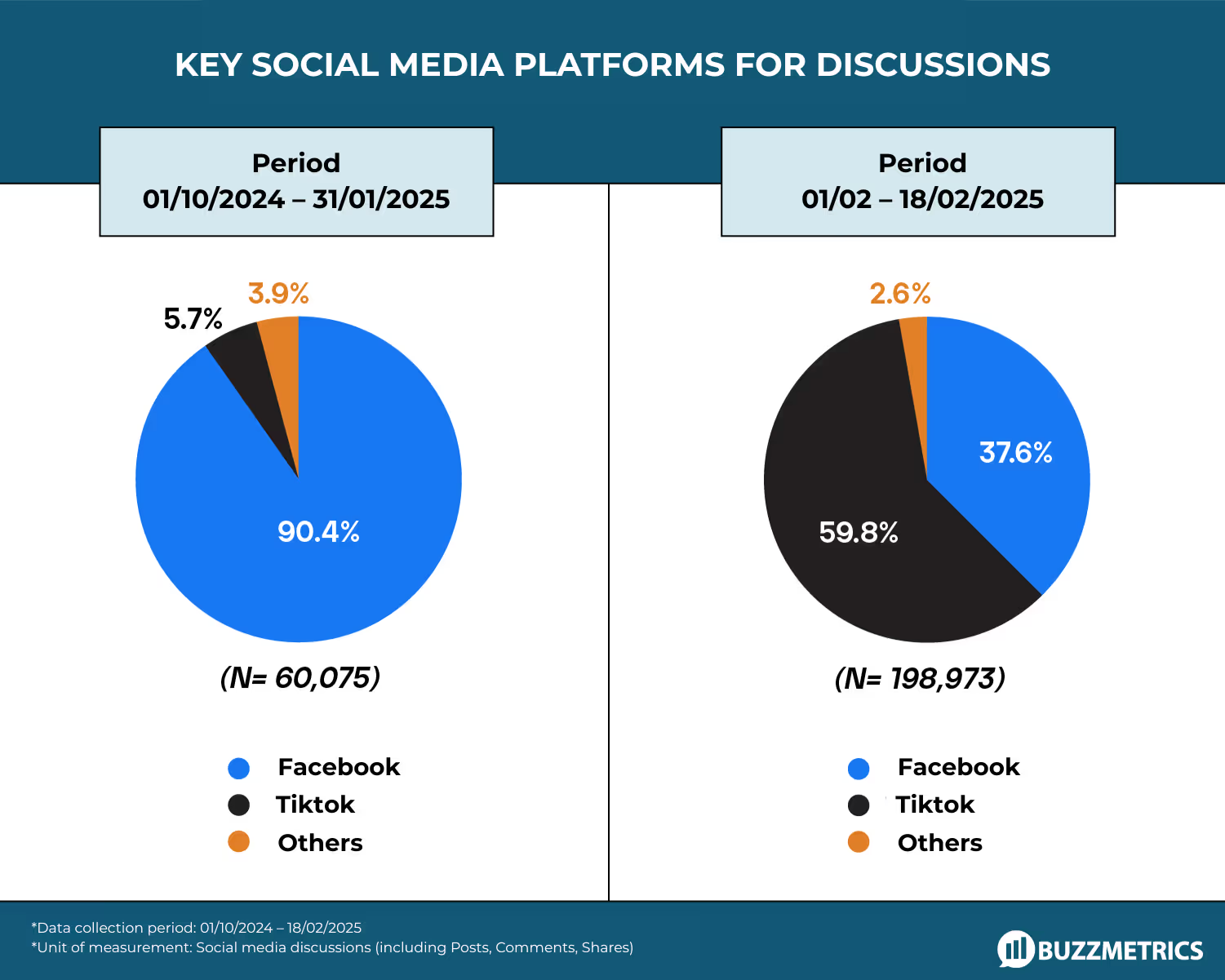
In addition to content fluctuations, the social media platforms where discussions take place also experienced significant shifts. During the “off-peak” period, Facebook remained the dominant platform in terms of discussion volume. However, entering the “peak” phase, TikTok emerged as a new hotspot, with its share of discussions surging dramatically from 5.6% to 59.8%.
TikTok didn’t just get people’s attention, it also proved how fast content could go viral on the platform: Each post related to seasonal flu on this platform generated an average of 282 discussions, far surpassing Facebook’s average of only 5. In less than three weeks, TikTok videos on the topic accumulated at least 26.4 million views, underscoring the platform’s exceptional reach and influence.
3. Discussion Trends on Topics Related to Seasonal Flu
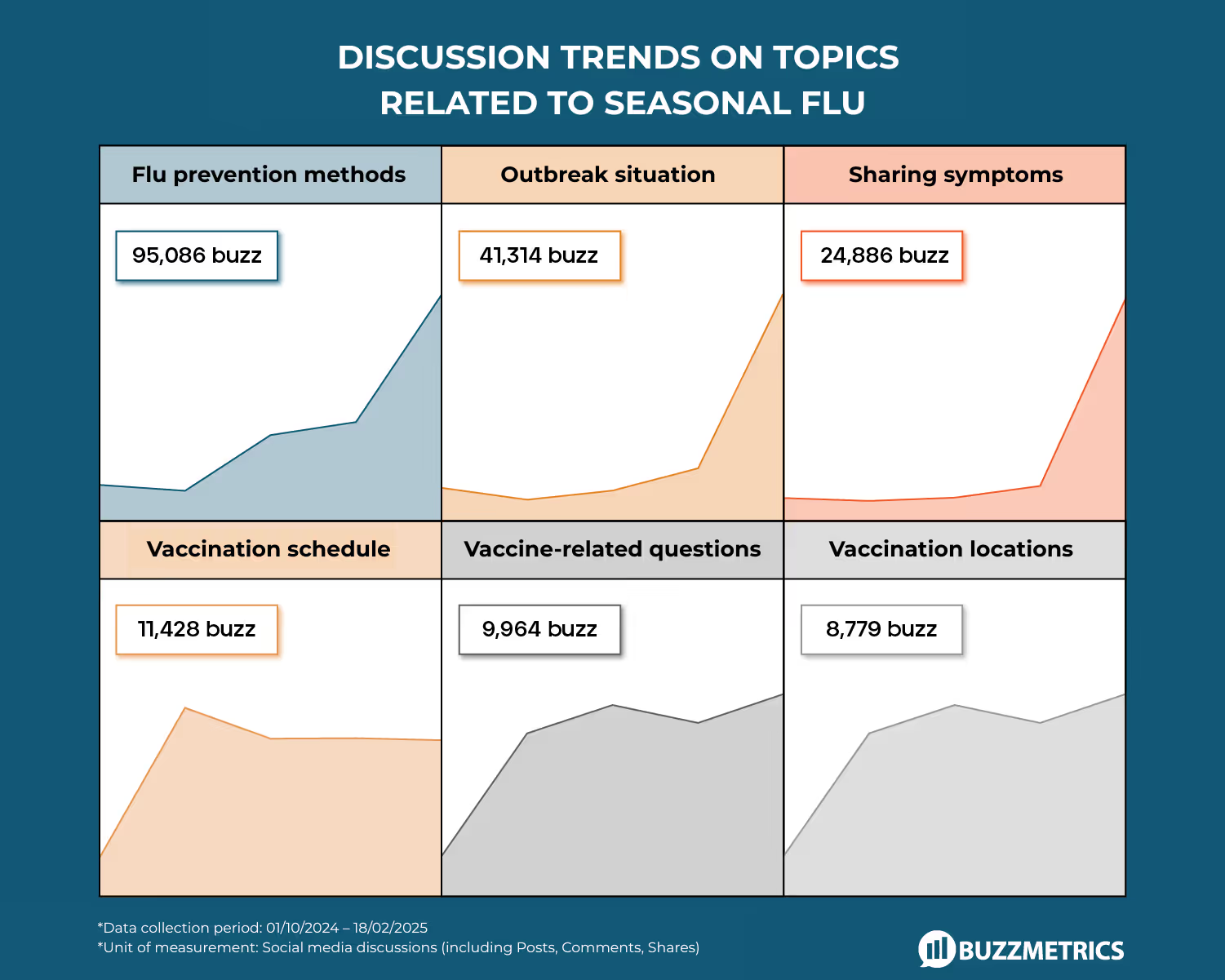
During normal periods, discussions about seasonal flu primarily revolve around questions regarding vaccines, vaccination schedules and clinic locations. However, during peak periods, the scope of discussion significantly broadens.
Users began to focus on symptoms, prevention methods and the veracity of circulated information. Notably, news such as "13,000 deaths in the U.S." caused significant public alarm and raised doubts about the transparency of information sources, suggesting potential exaggeration for attention. These discussion types are rarely observed during low periods, reflecting the community's heightened anxiety and sensitivity to health risks.
4. Prominent Vaccination Brands in Discussion
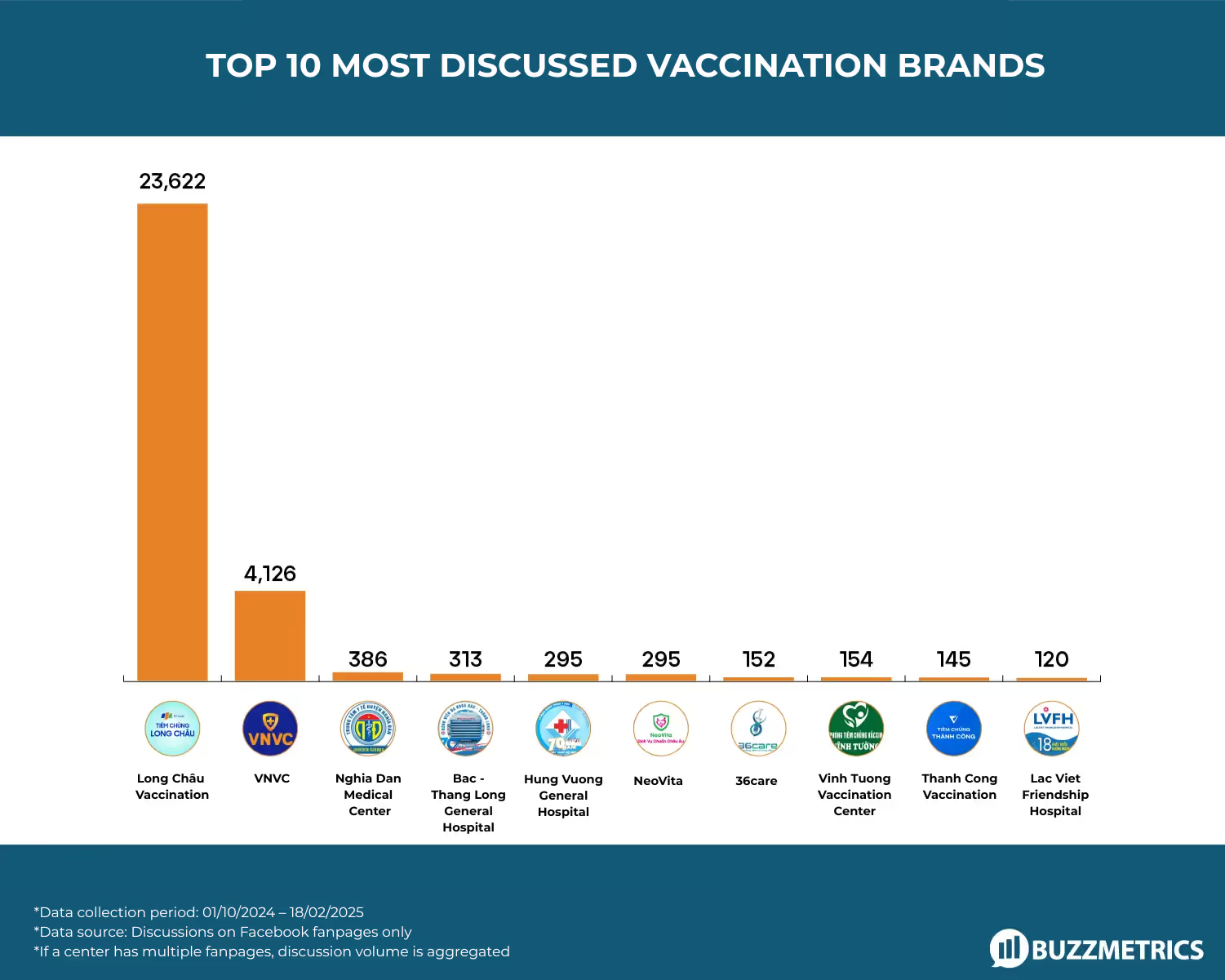
Data also indicates varying levels of presence for vaccination brands during the peak period. Long Chau Vaccination consistently appeared in discussions due to its ongoing communication strategy for seasonal flu service packages. However, at the peak, VNVC surpassed it in mentions, primarily driven by its highly shared knowledge-based content and updates on the epidemic situation.
Beyond the two aforementioned centers, other vaccination hubs primarily attracted discussion from the Northern region, indicating a clear geographical segmentation in user interest.
Conclusion:
Social media data indicates that seasonal flu is no longer a "familiar and safe" topic as it once was. Amidst growing public sensitivity to health issues, the shifts in how individuals receive and respond to information are dynamics that healthcare organizations, health service brands and media agencies cannot afford to overlook.
This period necessitates that brands become more proactive in monitoring discussions, promptly adjusting their communication strategies and serving as reliable sources of information.
Article Information










.webp)








